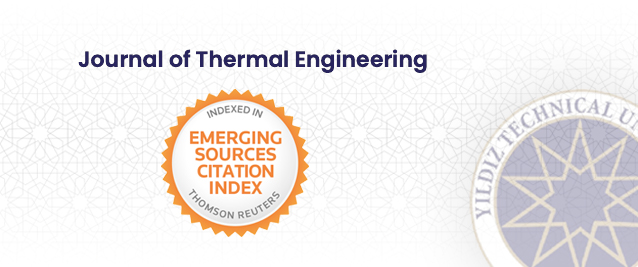Abstract
Temperature uniformity and peak-temperature reduction of lithium-ion battery packs are critical for adequate battery performance, cycle life, and safety. In air-cooled battery packs that use conventional rectangular ducts for airflow, the insufficient cooling of cells near the duct outlet leads to temperature nonuniformity and a rise in peak temperature. This study proposes a simple method of using a converging, tapered airflow duct to attain temperature uniformity and reduce peak temperature in air-cooled lithium-ion battery packs. The conjugate forced convection heat transfer from the battery pack was investigated using computational fluid dynamics, and the computational model was validated using experimental results for a limiting case. The proposed converging taper provided to the airflow duct reduced the peak temperature rise and improved the temperature uniformity of the batteries. For the conventional duct, the boundary layer development and the increase in air temperature downstream resulted in hotspots on cells near the outlet. In contrast, for the proposed tapered duct, the flow velocity increased downstream, resulting in improved heat dissipation from the cells near the outlet. Furthermore, the study investigated the effects of taper angle, inlet velocity, and heat generation rate on the flow and thermal fields. Notably, with the increase in taper angle, owing to the increase in turbulent heat transfer near the exit, the location of peak temperature shifted from the exit region to the central region of the battery pack. The taper-induced improvement in cooling was evident over the entire range of inlet velocities and heat generation rates investigated in the study. The peak temperature rise and maximum temperature difference of the battery pack were reduced by up to 20% and 19%, respectively. The proposed method, being effective and simple, could find its application in the cooling arrangements for battery packs in electric vehicles.























